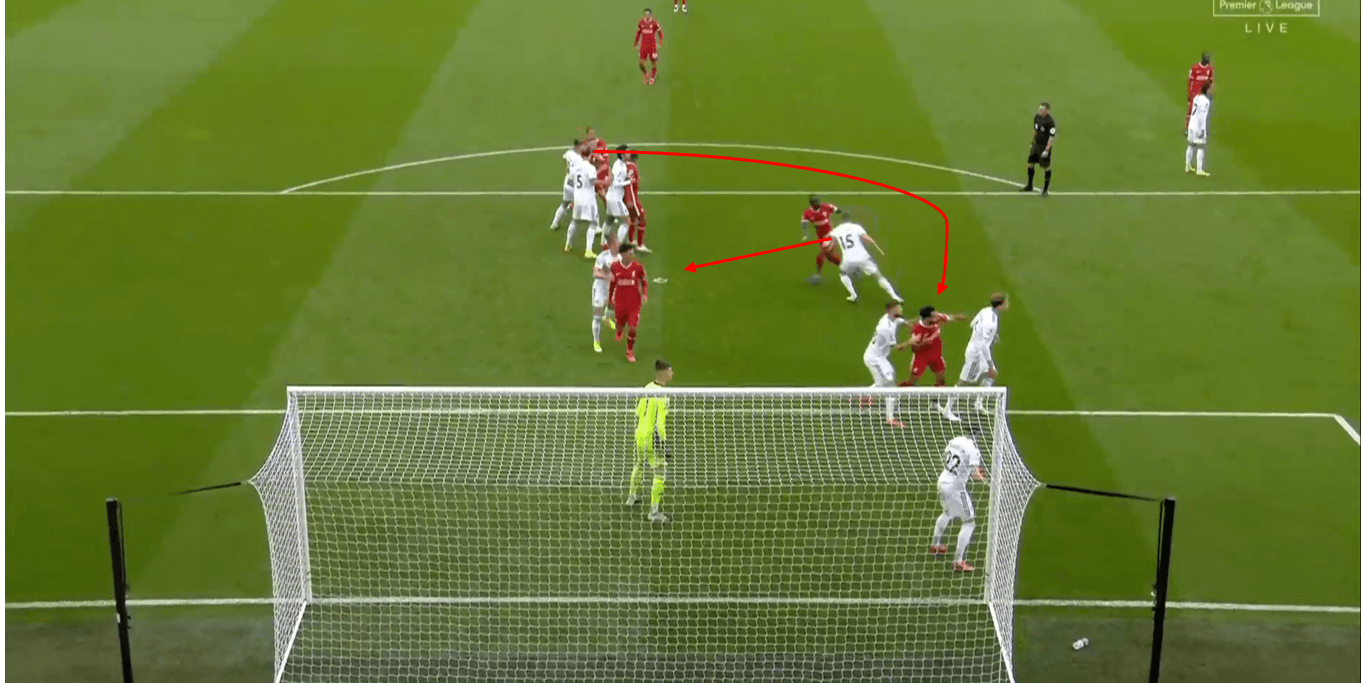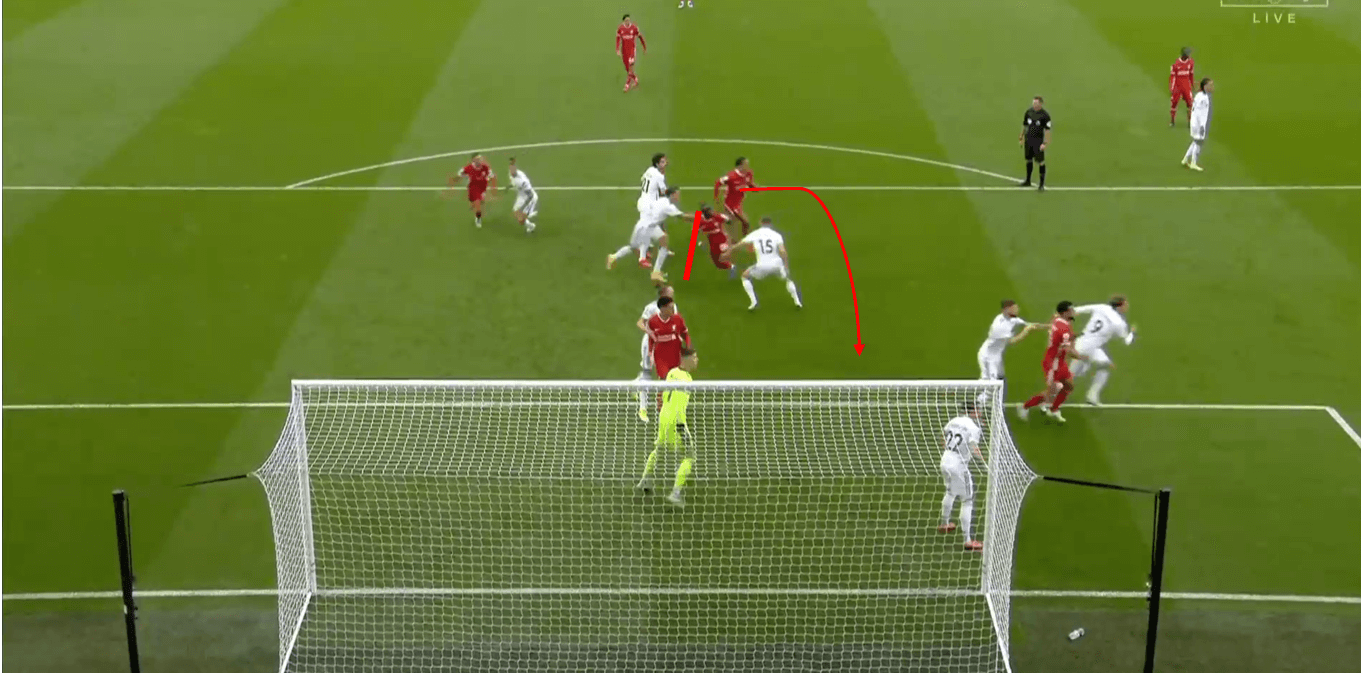Our set-piece analysis this week looks at the idea of traffic and which direction it goes in when attacking or defending corners. Traffic, in set-piece terminology, basically refers to players in the box, and so the more congested one area is, the greater the ‘traffic’. Traffic can, of course, move, and so which direction it moves in can play a big part. This set-piece analysis looks at moving in the opposite direction of traffic with a view to blocking, with examples from the NFL and the Premier League.
We can see an example of a play below from the NFL, with the play drawn onto the image here. The target player makes a run from the far side to come across to the near side (jet), and his marker follows him. The offensive team has two players ready to run on this side. Both of these players look to make inside runs towards the centre where their markers will follow, while the target player (highlighted in yellow) looks to run in the opposite direction by moving from centre to wide.

As a result, with the players moving in opposite directions, one of the runners is able to block the target player’s man, and because the attacker has the advantage of depth, they can just run around the block and into space.

The target player (Jarvis Landry) is therefore able to create a massive amount of separation from his marker, and the defence cannot adjust in a split second to deal with the space Landry takes up. Landry is then able to catch the ball and run for just over 15 yards. This is all created by running in the opposite direction to traffic.

This idea of moving against traffic is one that we see at times in football, and it is extremely useful to create separation and blocks from deeper areas. We can see an example this season of Virgil van Dijk’s goal vs Leeds, where Sadio Mané moves in the opposite direction to Van Dijk to help create traffic along with those deeper players.

As a result, Mané is able to create a block on Van Dijk’s marker and so Van Dijk creates separation to score. We notice in this whole set-piece that Van Dijk starts as the deepest player in the initial cluster, and Jarvis Landry does the exact same thing at the start of the play, as this helps them to create maximum separation from their markers.

This concept as a whole has many different variations and ideas which can be used, some of which I have already written about, but this gives a basic idea behind why players like to move against traffic at times and why it is successful.





Comments